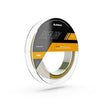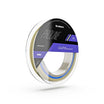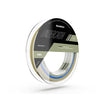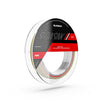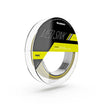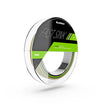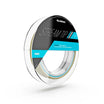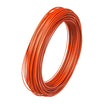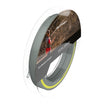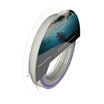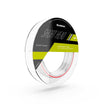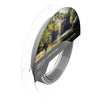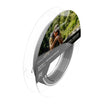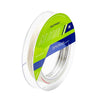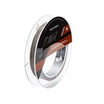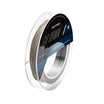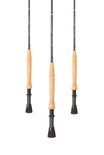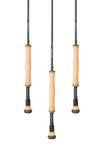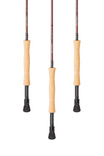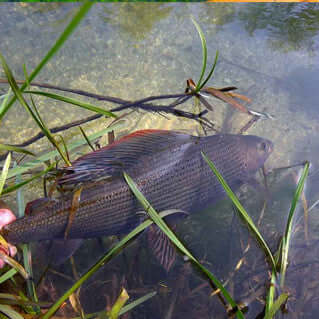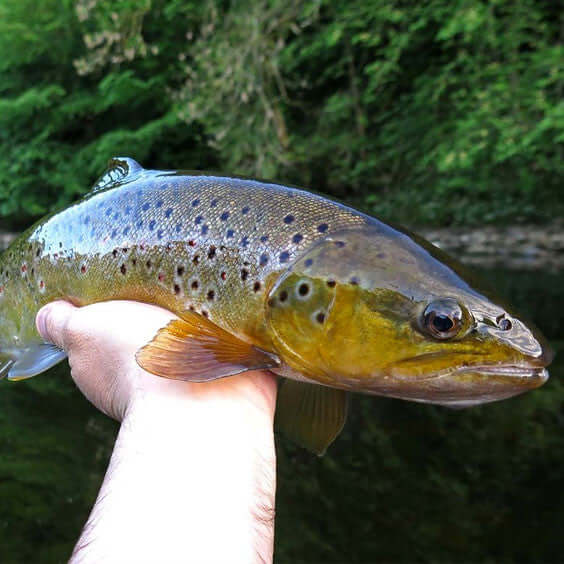My two main passions in life are dry fly fishing & grayling. Unfortunately the big grayling on my local chalk stream rarely rise & in the depths of winter dry fly is rarely productive elsewhere. However, the next most exciting thing (for me) than seeing a fish rise to my dry fly is watching a fish take my subsurface offering, be it a nymph, shrimp or bug. Furthermore, due to cormorant predation, the number of grayling in my local chalk stream is incredibly low which makes ‘blind search fishing’ largely a waste of time. One big advantage of sight fishing is the ability to selectively fish for big fish. Another is the avoidance of out of season trout in winter (grayling are easily distinguishable by their forked tail).

Keep yourself camouflaged
Probably the most significant advantage is that the precise three-dimensional location of the target fish can be determined, facilitating accurate casting & a choice of a suitably weighted fly. Finally, the take can usually be seen long before there is any indication on the line. In fact on several occasions I’ve watched big grayling inhale my fly & instantly spit it out with not the slightest indication on the line & without me even having time to react. It makes me wonder how many takes we are unaware of when ‘blind fishing’. My choice of tackle is a long, light-line rod (10 to 12’, 2 or 3 weight), Euro/French nymph setup using a micro-nymph line ending in a short, bicoloured indicator (just in case I can’t see the fish clearly enough to see the take) & 5 or 6x tippet (about 1.5 times the water’s depth) ending in a single fly.
Micro Nymph Line
I prefer a micro-nymph line to a traditional mono French leader because it is far easier to handle as it has far less memory even when taken straight off the reel: particularly on cold winter days this can be very important. Alternatively I’ll opt for a long Tenkara rod (13’ plus) teamed up with a hi-vis fluorocarbon line or Titanium line (plus short indicator) about 6’ shorter than the rod plus about 6’ of 5x tippet. With both set ups I will hold the indicator/line end just off the water whilst tracking the rod downstream, keeping the line just under tension. The indicator is there for those situations where my view of the fish is too poor to clearly watch the fish take. My tactics for sight fishing are very simple but effective. Polaroid glasses are essential (amber or yellow are my choice since they work in low light as well as bright light).

Big UK Grayling
I usually start at the bottom of the beat & walk upstream since this is less likely to spook the fish. I move very slowly (fish are very sensitive to movement), carefully scanning the open areas of gravel between the Ranunculus beds (grayling prefer open areas so that they can easily see approaching predators). I look for the obvious dark, forked tails & for small patches of clean gravel that often indicate where a fish has been grubbing for Gammarus & nymphs or where a fish’s tail has been constantly wafting away any silt. Once located I analyze the fish’s position with respect to depth, current speeds & any cover that I might use in my approach in order to determine the best angle of approach. The closer I can get the better since it allows me to get far better line control, particularly when manipulating subtle movements of my fly to induce a take. My preferred angle of approach, when it is possible without spooking the fish, is to cast straight across or slightly down & across to my fish.
Down and Across
This confers several advantages: I can better control the rate at which my fly sinks; by overcasting across the river I can precisely adjust the line at which my fly drifts; I can, if I wish, apply small upstream lifts as my fly reaches the fish which seems to be far more effective than pulling the fly downstream to induce a take & finally I can more easily see the fish’s mouth & the take. The only disadvantages of fishing downstream, (where it is allowed), are that the fish immediately has the advantage of fighting with the current, something that grayling are masters at doing & also there is an increased risk of the angler being seen & the fish being spooked. As for flies, my favourite grayling flies are in another blog post. It’s worth having a range of patterns, sizes & colours since there are times when the grayling can be hyper finicky, totally ignoring one pattern yet enthusiastically taking something different.

Crystal clear water grayling
At times there appears to be no logic as to which fly they want. Usually my standard favourites work fine, orange or pink Gammarus, orange or pink Utah Killer Bugs, Silver Bead-head Partridge & Hare’s Ear Spider, pink or black Bead-head Hare’s Ear or Stripped Quill nymphs or Peeping Caddis, but I always have a few other patterns as a back-up. I would urge all grayling anglers to consider joining the Grayling Society, the research branch of which does a lot to help with grayling conservation.



